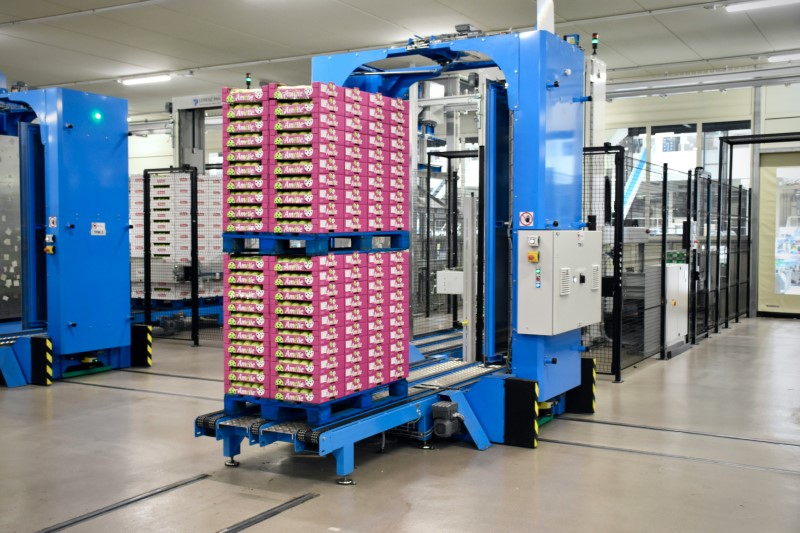What is MaxiCode?
MaxiCode is a 2D barcode system developed by UPS to streamline package tracking and management. This barcode is uniquely designed for the logistics industry, ensuring efficient and accurate tracking of packages through high-speed conveyor systems.
Unlike traditional barcodes, MaxiCode combines a fixed-size symbol, hexagonal modules, and a central bullseye pattern, making it highly reliable for logistics operations.
Technical Specifications
MaxiCode is recognized for its fixed-size symbol that includes hexagonal modules arranged around a central bullseye pattern. This structure allows for quick localization and scanning, even at high speeds.
MaxiCode can store up to 93 alphanumeric characters or 138 numeric characters, providing ample space for detailed shipping and tracking information.
Additionally, MaxiCode's robust error correction and data redundancy ensure reliable data retrieval, even if part of the barcode is damaged.

How MaxiCode Work?
1. Encoding and Structure
MaxiCode encodes information using primary and secondary messages. Modes 2 and 3 are specifically designed for addressing and tracking purposes, respectively. The bullseye pattern at the center of the symbol enables quick localization and alignment, facilitating rapid scanning and decoding.
2. Scanning and Decoding
Specialized MaxiCode readers are used to read these barcodes. The bullseye pattern helps readers quickly locate the barcode, while the hexagonal grid and data redundancy ensure accurate and fast decoding, even under less-than-ideal conditions.
Advantages of MaxiCode
1. Efficiency in Logistics
One of the primary benefits of MaxiCode is its efficiency in logistics. Designed for high-speed conveyor belt systems, MaxiCode ensures quick and accurate package sorting and tracking.
Its orientation-independent scanning capability means it can be read from any angle, reducing the need for precise alignment during scanning.
2. High Data Capacity
MaxiCode can store detailed shipping and tracking information, enhancing its utility in logistics. This high data capacity allows for comprehensive data storage, including sender and receiver details, package content information, and routing instructions.
3. Error Correction
MaxiCode incorporates robust error correction features, ensuring data integrity even if the barcode is damaged. This redundancy in data encoding is crucial in logistics, where barcodes can be subject to wear and tear.
4. Security Features
Security is another significant advantage of MaxiCode. It supports encryption and digital signatures, protecting sensitive shipping information from unauthorized access and tampering.
MaxiCode Applications
1. Primary Use in Logistics
MaxiCode is predominantly used in logistics for package tracking and management. UPS, the developer of MaxiCode, utilizes this barcode system extensively to streamline its shipping processes.
2. Other Industry Applications
Beyond logistics, MaxiCode finds applications in various industries:
Manufacturing: For tracking products and parts throughout the production process.
Retail: Used in inventory management to track stock levels and product locations.
Healthcare: For patient and medication tracking, ensuring accurate and efficient healthcare delivery.

How to Generate MaxiCode?
Generating MaxiCode can be done easily using an online barcode generator.
Select MaxiCode from the list of available barcode types, input your data into the provided fields, ensuring it conforms to the character limits, customize settings as needed including error correction levels and encryption options, and then generate the barcode to download the image for printing or digital use.
Maxicode Comparison with Other 2D Barcodes
1. MaxiCode vs. QR Code
MaxiCode and QR codes differ significantly in structure and application. QR codes are more general-purpose, used for anything from marketing to payment systems.
In contrast, MaxiCode is optimized for high-speed scanning and package tracking, making it more suitable for logistics.
2. MaxiCode vs. Data Matrix
While both MaxiCode and Data Matrix can store a considerable amount of data, Data Matrix codes are typically smaller and used in manufacturing and pharmaceuticals for part and product tracking.
MaxiCode's larger size and robust error correction make it better suited for logistics.
3. MaxiCode vs. Aztec Code
Aztec Codes are known for their compact size and high data capacity, often used in transportation and ticketing.
MaxiCode's design, with its bullseye pattern and hexagonal grid, is specifically tailored for fast and reliable scanning in logistics environments.
Future of MaxiCode
As technology evolves, MaxiCode is poised to benefit from improvements in scanning technology and data encryption, enhancing its efficiency and security features.
With its robust capabilities, MaxiCode is likely to see adoption in new industries, furthering its role in efficient tracking and data management.
In essence, MaxiCode has transformed logistics by providing remarkable efficiency in shipment tracking and administration.
Its large data storage, strong mistake correction, and security characteristics make it an indispensable tool in a variety of businesses.
For those looking to leverage MaxiCode for their logistics needs, an online barcode generator provides an easy-to-use platform for generating these powerful barcodes. Explore the benefits of MaxiCode today and enhance your logistics processes using an online barcode generator for free.
FAQs
1. What is MaxiCode used for?
MaxiCode is primarily used for tracking and managing packages in the logistics industry.
2. How much data can MaxiCode hold?
MaxiCode can store up to 93 alphanumeric characters or 138 numeric characters.
3. How is MaxiCode different from QR codes?
MaxiCode is optimized for high-speed scanning and package tracking, whereas QR codes are more general-purpose.




